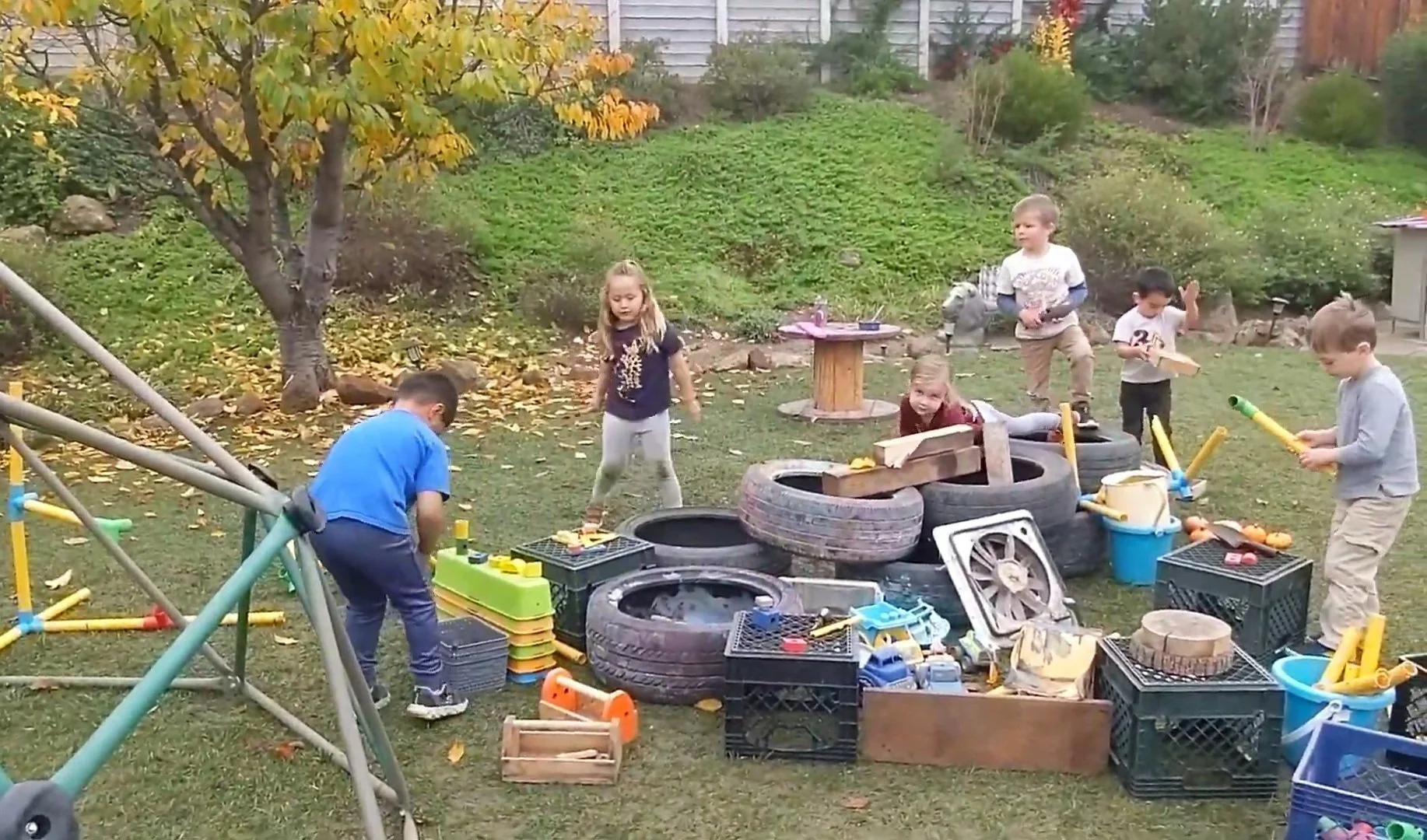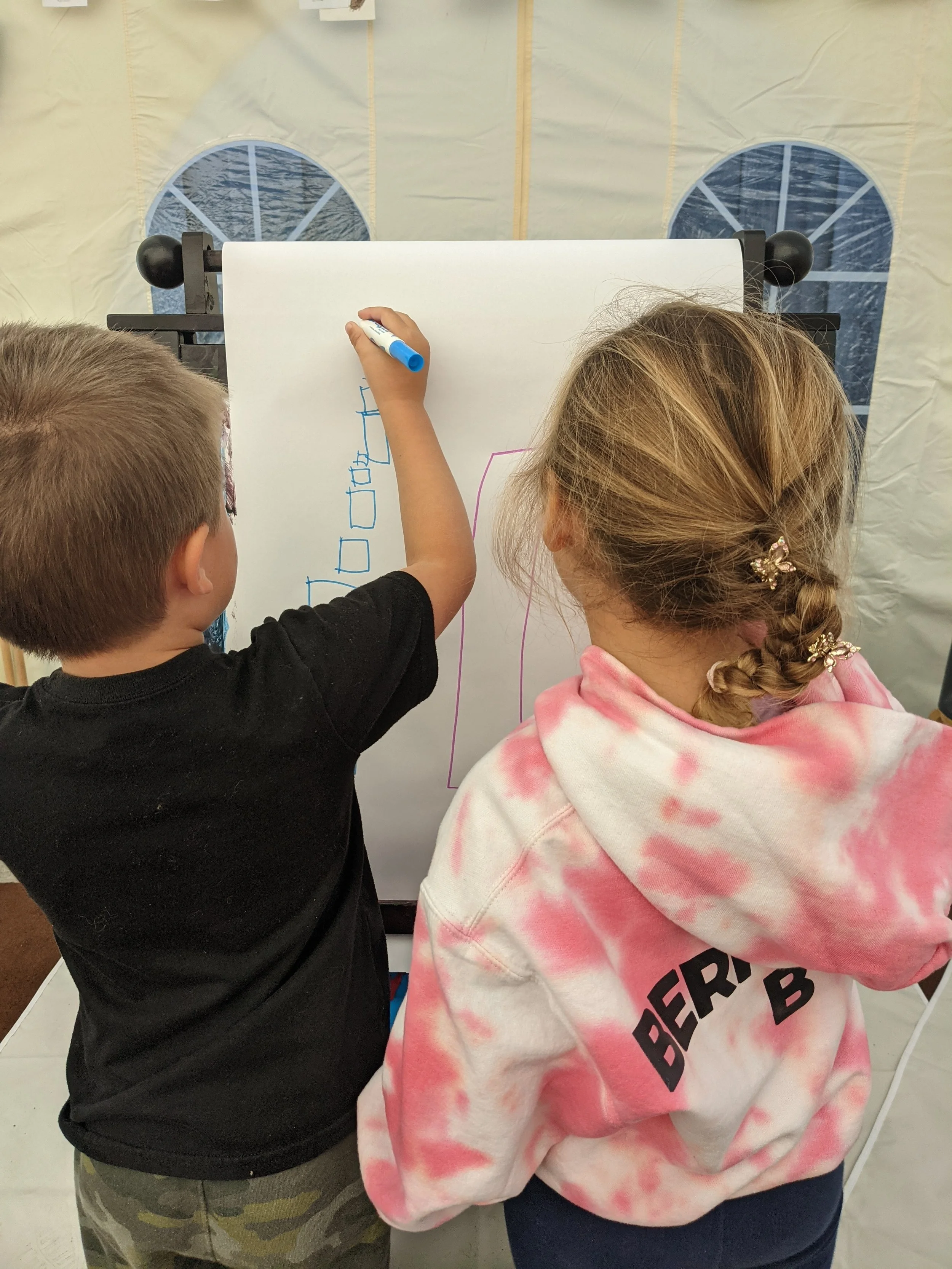The Magic of Loose Parts
LOOSE PARTS
With the construction of our new outdoor classroom space, we’ve been putting some added focus on the quality of the presentation of materials available to children. We’re looking to make our space inspirational while being careful to avoid overstimulation. The goal is for this new space to be built entirely for children with endless possibilities for creativity. Educator/author/play advocate Bev Bos once described a high-quality Early Learning environment for young children as “a place where they feel comfortable enough to play without looking over their shoulders seeking approval - or dodging disapproval - to explore without fear, to redefine their space and to use materials found around them to create for themselves a sense of order, pattern, and structure.”
As we’ve used this philosophy to guide the creation of our classroom (or “the third teacher” as they call it in Reggio Emilia, Italy), we’ve seen a sudden and new spark of creativity from our children, particularly in their use of loose parts. We’ve made a few more loose parts readily available to the children such as jars of spools, popsicle sticks, and corks. We’ve pared down some excess building materials, leaving space only for the most open-ended supplies. With this little revamp and a “less is more” approach, we were instantly reminded of the incredible creative potential of our little ones.
These children are fully capable of sitting in the driver’s seat of their own learning. In just a few days, we’ve noticed so much learning taking place. Here are a few things we’ve spotted…
socio-emotional learning
Our children are cooperating, collaborating, and strengthening peer connections. They’ve been working in large groups, creating and pretending, and working together on executing agreed-upon plans. The use of loose parts also allows children to find creative ways to direct their own learning, for instance, bringing popsicle sticks from the building area to the play dough table to use for cutting and making intricate designs.
As you click through the slideshow below, hover over over each image to read details and context about the learning taking place.





language and literacy
Loose parts exploration leaves space for many different types of learning, language and literacy not excluded. The children learn to explain and describe their imaginative ideas, communicate and plan collaboratively, recognize letter shapes in their abstract work, and even find opportunities for direct writing and reading practice. Remember also that pretending is a child’s strongest practice of symbolic representation, an important foundational pre-literacy skill! The children find deep meaning in visual symbolism as Elliott creates “a ramp for the chickens” from sticks in our block city, or as Emma cooks “soup” out of beads and bottlecaps for her friends.
As you click through the slideshow below, hover over over each image to read details and context about the learning taking place.







cognitive learning
Loose parts exploration allows opportunity for plenty of preschool science and math! We see the practice of scientific thinking such as planning, experimenting, and hypothesizing, as well as mathematical thinking such as engineering, measuring, and counting.
As you click through the slideshow below, hover over over each image to read details and context about the learning taking place.









physical learning
Motor skills are developed through the exploration of loose parts both big and small.
As you click through the slideshow below, hover over over each image to read details and context about the learning taking place.




We’re truly enjoying the magic while we see these skills develop organically through loose parts work. While it sometimes seems like “junk” to the untrained eye, loose parts can be some of the most valuable materials at a child’s disposal. We look forward to following the children’s creative lead as they continue this open-ended work and we can’t wait to see where it takes us!
